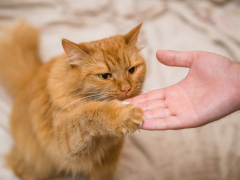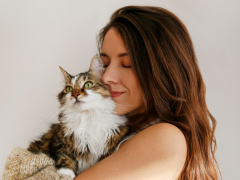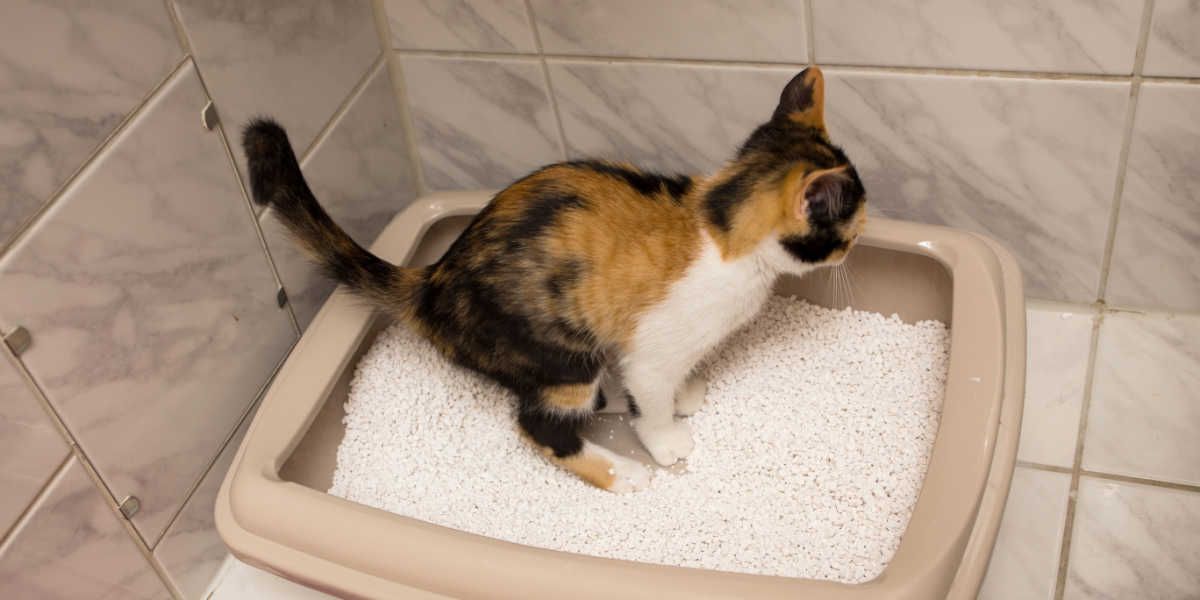
Because hemorrhoids are common in people, it is a common assumption that a swelling or disorder around the anal area in cats may be the same condition.
While cats don’t get hemorrhoids specifically, learn more in this article about a few conditions that may appear similar in cats, such as rectal prolapse, growths and anal sac disease. We also discuss how they’re recognized and treated, as well as some frequently asked questions.
Also Read: How To Tell If A Cat Is Straining To Poop Or Pee
Can Cats Have Hemorrhoids?
Strictly speaking, cats don’t get hemorrhoids, but they can develop concerns in the same area. We’ll review each of these more common findings, as well as how to recognize them, treatment approaches, and prevention strategies.
Health Conditions That Resemble Hemorrhoids in Cats
Now that we know that cats don’t commonly experience hemorrhoids as humans do, but certain health conditions may cause symptoms that resemble them, below we’ll explore health conditions that resemble hemorrhoids in cats.
Rectal Prolapse In Cats
This is the condition in cats that most often resembles hemorrhoids. This involves the internal tissues of the rectum turning inside out and protruding from the anus to become visible.
A rectal prolapse will appear as a pink to red tubular structure protruding from the anal opening where your cat poops from.
The tissue will typically appear healthy and pink unless the prolapse has been present for some time. In these cases, prolapsed tissue may appear darker in color, have litter or other debris stuck to it, or have oozing and crusting present.
Rectal Prolapse in Cats: Causes
Rectal prolapse in cats is generally caused by straining behavior. It occurs most commonly in young cats or kittens with diarrhea, especially secondary to intestinal parasites.
When rectal prolapse occurs in adult cats, it can be secondary to straining from difficulty passing bowel movements. Constipation (difficulty pooping) and obstipation (a fecal blockage) are more common in cats affected by dehydrating conditions like kidney disease and diabetes. Overweight and obese cats can also be more commonly affected.
Cats that have difficulty urinating may strain to urinate enough to lead to rectal prolapse, especially if straining occurs over and over again. Feline Lower Urinary Tract Disease (FLUTD) is an umbrella term that incorporates several causes of urinary straining in cats including urinary tract infections, bladder stones, and feline idiopathic cystitis.
Rectal Prolapse in Cats: Treatment and Prevention
The earlier a rectal prolapse is treated, the faster and easier it will resolve. Chronic prolapses become more difficult to correct without more invasive treatments because the extruded tissue becomes more swollen with inflammation over time.
Initially, your veterinarian may treat a rectal prolapse by gently re-inserting the prolapsed tissue back into the anal opening. This often must be done under anesthesia as this can be uncomfortable and a kitty patient needs to be fully relaxed and not be constantly straining against the veterinarian’s efforts.
A veterinarian then will often place what is called a purse string suture around the anus. This helps to narrow the anal opening temporarily, usually for 5-7 days, to keep the prolapsed tissue from falling out while still allowing your cat to poop. Stool softeners and a soft food diet are often recommended.
The underlying cause for rectal prolapse must also be identified and treated, whether that is related to constipation, diarrhea, or a urinary issue.
If simply replacing the prolapsed rectal tissue is not successful, or if the prolapse is too chronic to be replaced, surgery may be needed. The prolapsed part of the rectum may need to be removed if it is too heavily diseased. If healthy rectal tissue is present but cannot be reinserted, a procedure called a colopexy may be performed. A colopexy involves suturing the end of the colon to the abdominal wall, which keeps traction on the rectum and prevents it from prolapsing.
Prevention of rectal prolapse can sometimes be achieved, especially in young kittens, by focusing on optimal health and nutrition. This may include:
- Adequate deworming
- A good quality diet to prevent diarrhea
- Keeping your cat well hydrated.
- Keeping your cat at a healthy weight.
- Minimizing stress that may contribute to inappropriate urinary behavior.
- Addressing causes of constipation and urinary straining early and regularly according to your vet’s recommendations.
- Having annual or biannual exams for your cat with your vet.
Also Read: The 10 Best Cat Foods For Diarrhea
Anal Sac Disease In Cats
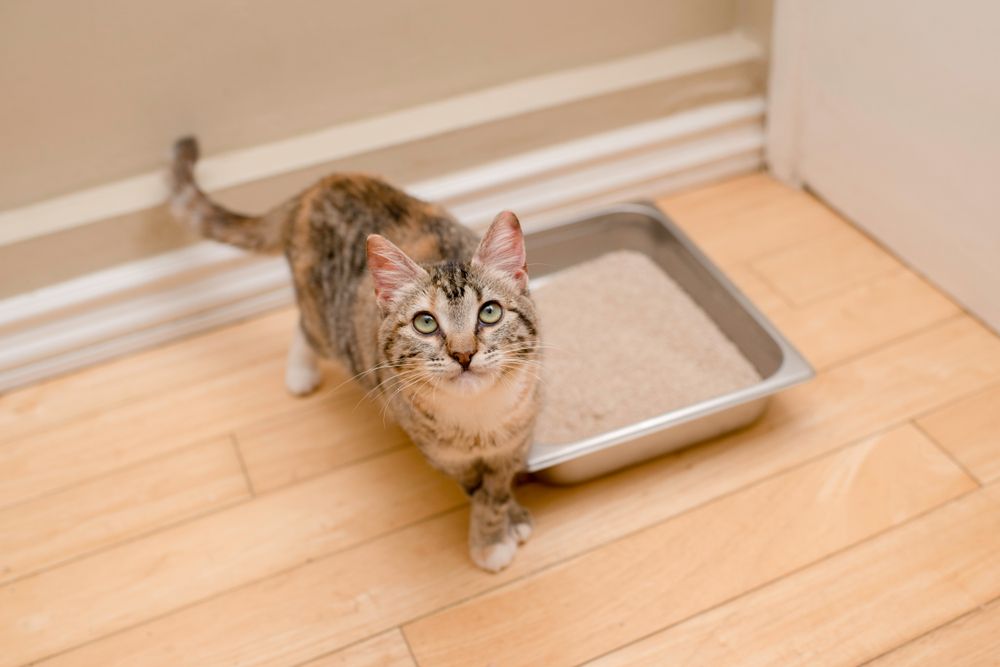
Cats with anal sac problems can look very inflammed and sore around their anus, and groom themselves excessively in this area
The anal sacs are found on each side of the anus, at about the 8 and 4 o’clock position. In cats, they are about the size of a raisin.
They are small glands inside the anal sacs that produce a brownish, foul smelling fluid. Normally, when a cat has a bowel movement, the sacs contract and fluid is expelled with poop. The poop is then scented with a cat’s unique calling card, helping to mark territory.
If the anal sacs don’t empty properly, the material inside can get thicker, making it even harder to get out. Bacteria can also migrate into the sacs and overgrow if the sacs aren’t emptying. When the sacs cannot express normally, this is called an anal sac impaction. When an infection develops causing pus to build up and bleeding, this is called an anal sac abscess.
If an abscess goes untreated, it will develop into a tender swelling near the anus, which some might mistake for hemorrhoids. However, the abscess will eventually break open through the skin next to the anus, leaving a small hole and fluid drainage.
Cats with an anal sac impaction or abscess may be scooting their bottoms along the ground, excessively licking or grooming the area under their tail, or a change in behavior like hiding may be noted. If your cat allows you to take a peek, you may be able to see a moist, swollen area beneath the tail or the small fistula (hole) left over after the abscess ruptured.
Anal Sac Disease: Causes
Anal sac impaction or abscessation can occur in any cat. However, cats at higher risk include:
- Overweight or obese cats
- Cat with chronic diarrhea or constipation
- Cats with inflammatory bowel conditions
- Cats with abnormal neurologic function in their hind end.
Anal Sac Disease: Treatment and Prevention
If the anal sac has already ruptured open, your veterinarian may still choose to flush the hole opening with antiseptic solution. An antibiotic is typically prescribed to ensure proper healing.
If the abscess is visible but has not ruptured open yet, Your vet may elect to sedate or anesthetize your cat to open the abscess and flush it out.
Once you get home, you need to make sure your cat cannot lick or chew the area. If your cat allows, you may place a warm compress over the swollen area to help with healing. Just ensure that the compress is not too hot on your own skin prior to applying it to your cat.
The best prevention for anal sac disease is to keep your kitty at a healthy weight and keep a close eye on bowel movements. Any signs of discomfort around the back end, scooting, constipation or diarrhea should be addressed as soon as possible to prevent complications like anal sac disease.
Also Read: Cat Anal Gland Problems: Causes, Symptoms & Treatment
Rectal Polyps In Cats
A rectal polyp is a small growth that arises from the tissue lining of the rectum. While most are not cancerous, a little less than 20% can show malignant behavior. They can cause issues with defection, straining to defecate, diarrhea, and sometimes rectal bleeding.
Rectal polyps are considered uncommon in cats, but your veterinarian may detect one during a rectal exam. Polyps may sometimes protrude from the anus especially during a bowel movement, giving the appearance of hemorrhoids in cats.
Rectal Polyps: Causes
The true cause of rectal polyps in cats is not well known and there appears to be no breed predisposition. As with many tumors and growths, older cats may be more predisposed.
Rectal Polyps: Treatment and Prevention
Rectal polyps can be removed surgically. Because a cancerous growth is always a possibility with any rectal tumor, the polyp will be sent out to a lab to be tested and confirm it is benign.
Rectal Tumors In Cats
When it comes to cancerous rectal tumors, the most common in cats is called lymphosarcoma.
Rectal Tumors: Causes
In most cases, an underlying reason why a cat develops rectal lymphosarcoma is unknown. Lymphosarcoma can develop in a cat of any age, breed, or sex. However, cats with feline leukemia virus (FeLV) and feline immunodeficiency virus (FIV) can be at higher risk for developing any type of lymphosarcoma.
Rectal Tumors: Treatment and Prevention
Lymphosarcoma can often be diagnosed with a fine needle aspirate, where a needle and syringe are used to collect a small sample of cells to send out to a lab. Given the location of a rectal mass, sedation or a brief period of anesthesia may be needed to collect the sample.
Surgical removal is the treatment of choice for most rectal tumors, however the location of them can make it challenging in some cases to reach them. Lymphosarcoma is very locally invasive, meaning that even with surgery, full removal of all cancer cells may not be possible.
Lymphosarcoma is often treated with chemotherapy, which involves using drugs that target rapidly growing cells like cancer cells. Chemotherapy may be elected as follow-up treatment even if surgical removal of some tumor is performed.
With any kind of lymphosarcoma, early detection is very important. Any tumor will be more amenable to treatment when it is smaller. Unfortunately, a tumor may be present already before any signs of illness develop.
There are no tried and true strategies to prevent lymphosarcoma, however keeping your cat indoors greatly reduces the risk of transmission of FIV and FeLV from other cats. If your cat is outdoors, vaccinating your cat for FeLV would be recommended. There is no vaccine for FIV that is routinely recommended.
Regular check-ups with your veterinarian can be helpful to check for early signs of a problem like weight loss and patterns with digestive upset that might indicate an underlying medical concern.
Also Read: Feline Leukemia Vaccine: Cost, Schedule & Side Effects
Rectal Tears In Cats
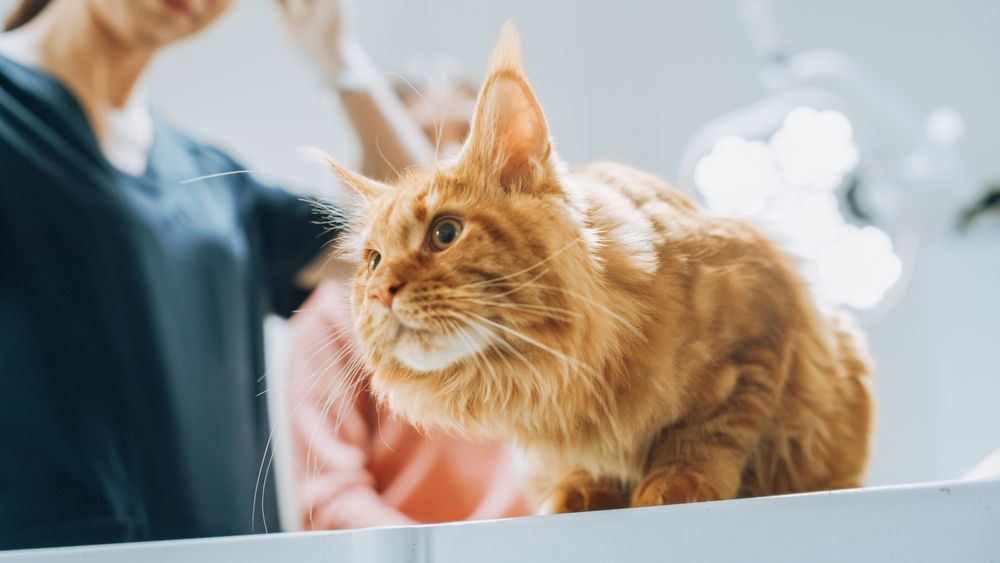
Any disorder of the anus or rectum can cause bloody poop, straining and discomfort.
Tears of the rectum are generally uncommon. Cats may show signs of constipation, straining to defecate, and bleeding from the rectum. If left for long enough, a rectal tear can lead to swelling, which may end up resembling hemorrhoids.
Rectal Tears: Causes
There is no predisposition for rectal tears, as they usually occur secondary to trauma.
Rectal tears can occur if a sharp object is ingested and manages to make it all the way to the end of the digestive tract. Examples can include needles, jagged pieces of plastic, bone fragments, and other abrasive objects. Tears can also occur secondary to a bite injury in a fight with another animal.
Rectal Tears: Treatment and Prevention
Rectal tears should be addressed as soon as possible since they can get infected very easily. A tear can be stitched closed under anesthesia. If the tear is toward the end of the rectum, it can be possible to repair it from the outside by everting the affected portion and turning it inside out just enough to access the area. However, if the tear is too far into the rectum, abdominal surgery may be required to repair it.
The risk for rectal tears can be reduced by ensuring your cat does not have access to sharp objects like pins and sewing needles, not feeding diets containing bone or bone fragments, and keeping table food containing bone material out of reach. Outdoor cats will be at higher risk for bite-related injuries.
Also Read: 10 Ways To Tell If Your Cat Is In Pain
Summary
While the swollen veins that cause hemorrhoids in people do not occur in cats, kitties can still develop medical conditions that resemble hemorrhoids. The main ones include rectal prolapse, swelling from anal sac disease, swollen rectal tears, and rectal growths.
It’s always best to address any of these conditions as soon as possible. Any time something appears abnormal in this area make sure to get your cat a veterinary exam for a proper diagnosis and treatment options.
Also Read: How Often Should Cats Poop? A Veterinarian Explains
Frequently Asked Questions
What is the main cause of hemorrhoids in cats?
Cats do not get hemorrhoids (swollen veins around the anus) the way people do, but they can get conditions that may have a similar appearance. These include rectal prolapse where the rectum turns inside out and protrudes from the anus, swelling from a rectal tear, swelling from infection of the anal sacs on either side of the anus, rectal polyps, and rectal tumors.
What can I put on my cat’s irritated anus?
You do have to be careful what types of topical ointments or creams you apply to your cat, since cats are very prone to grooming and licking off whatever you apply. Diaper rash creams and ointments can contain zinc, which can cause digestive upset if ingested. Vaseline is very safe to use on irritated areas, even if some is ingested but your veterinarian will have other options to be applied topically that will be more effective. If the anal area is irritated, your cat likely is licking the area, which can contribute to more irritation. Use of an elizabethan collar (the lampshade cone) can keep your cat from reaching the area and provide a better chance for healing.
What does a prolapsed cat anus look like?
It is not the anus that prolapses specifically, but the rectum. When a prolapse occurs, the rectum essentially everts, turning inside out and protruding from the anal opening. It will appear as a pink or red tubular structure. If a prolapse has just occurred, the tissue may still appear moist and healthy. In chronic prolapses, the tissue may become more irritated, have litter or other foreign material stuck to it, or have a crusty and oozing appearance.
-
Brister, J. Rectal Prolapse in Dogs and Cats. Veterinary Partner. Published August 7, 2020. Accessed June 8, 2023.
-
Hemorrhoids. National Institutes of Health National Library of Medicine, Medline Plus. Accessed June 8, 2023.
-
Rectal Polyp. Veterinary Society of Surgical Oncology. Accessed June 9, 2023.
-
Rubin, SI. Disorders of the Rectum and Anus in Cats. Merck Veterinary Manual. Accessed JUne 8, 2023.





